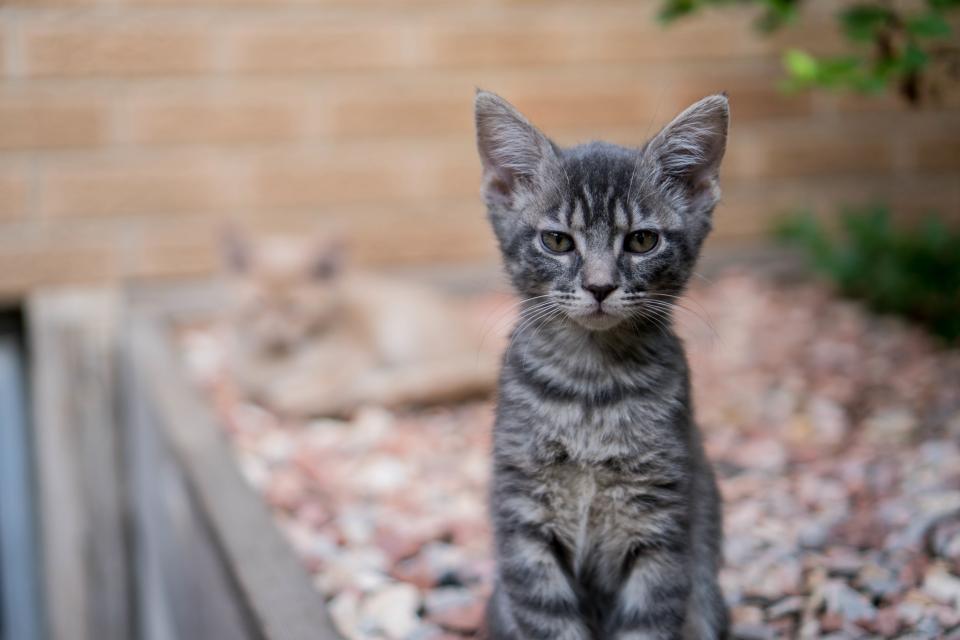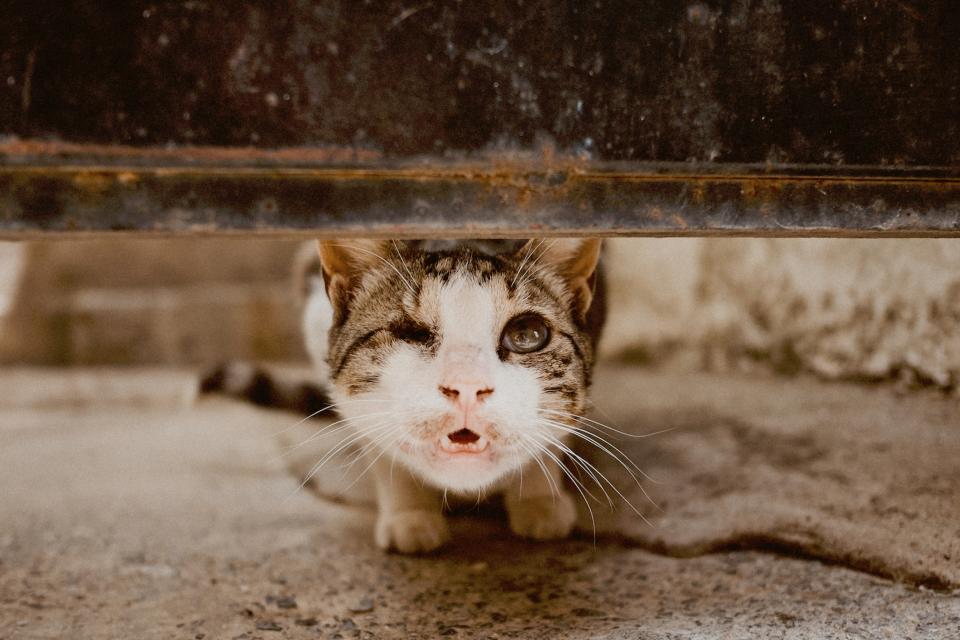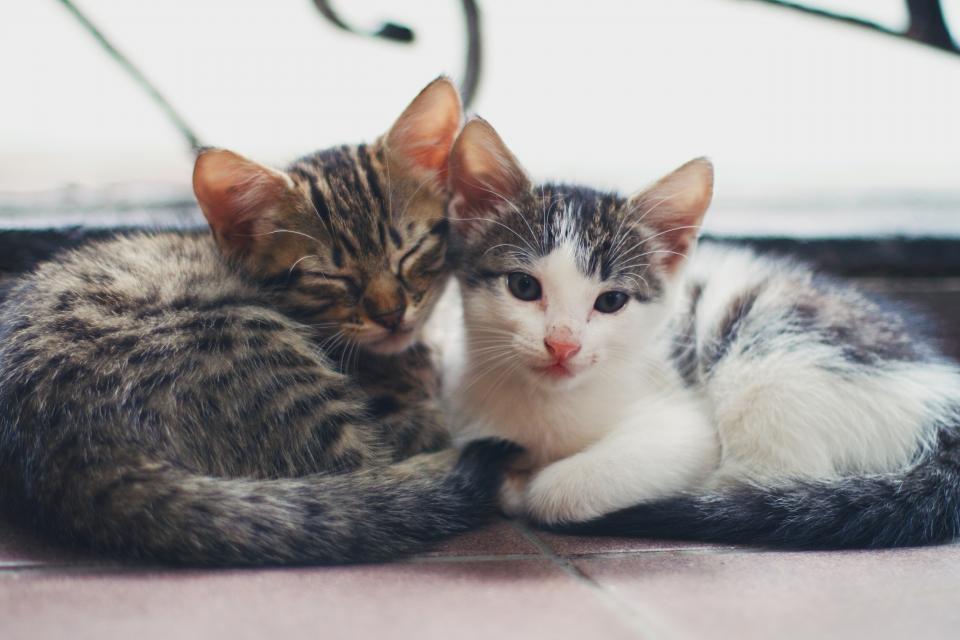This article delves into the fascinating world of feline genetics, exploring the reason behind the almost exclusive association of calico cats with the female gender. We'll unpack the intricate interplay of chromosomes, genes, and coat colour inheritance, explaining why calico patterns are so rare in male cats.
Part 1: The Genetics of Calico Cats

1.1 Understanding the Basics of Cat Genetics
- Cats, like humans, inherit genetic information from their parents in the form of chromosomes. These thread-like structures contain genes, the units of heredity.
- Cats have 19 pairs of chromosomes, with one chromosome from each pair coming from the mother and the other from the father. This means each cat receives half of its genetic makeup from each parent.
- The sex chromosomes, X and Y, determine the cat's gender: XX for female and XY for male. The X chromosome is larger and carries more genes than the Y chromosome.
1.2 The Role of Genes in Coat Colour
- Coat colour in cats is determined by multiple genes, with one crucial gene located on the X chromosome. This gene, known as the "O" gene, controls the production of orange pigment, responsible for the orange patches in calico cats.
- The O gene is responsible for the production of phaeomelanin, the pigment that gives cats their orange, red, or cream colours. This pigment is also responsible for the reddish-brown colour of human hair.
- There are two alleles (alternative forms) of this gene: O (dominant, producing orange pigment) and o (recessive, not producing orange pigment). Dominant alleles are expressed even if only one copy is present, while recessive alleles require two copies for expression.
1.3 Calico Colouration: A Result of X-Linked Inheritance
- The calico pattern is a result of the X-linked inheritance of the O gene. This means the gene responsible for orange colouration is located on the X chromosome.
- Female cats have two X chromosomes, allowing them to carry two alleles of the O gene (one from each parent). This means a female cat can be homozygous (OO or oo) or heterozygous (Oo) for the O gene.
- In a homozygous OO female, both X chromosomes carry the dominant O allele, resulting in an orange coat colour. In homozygous oo females, both X chromosomes carry the recessive o allele, leading to a non-orange coat colour, typically black or tabby.
1.4 The Role of X-Inactivation in Calico Pattern Formation
- One of the most fascinating aspects of calico cat genetics is the phenomenon of X-inactivation. This process occurs early in embryonic development, when one of the two X chromosomes in each cell of a female cat's body is randomly deactivated.
- This inactivation ensures that females, with two X chromosomes, don't produce double the amount of gene products compared to males. It's a balancing mechanism.
- The deactivated X chromosome becomes a Barr body, a condensed structure visible under a microscope. The deactivated X chromosome remains inactive in all subsequent daughter cells derived from that original cell.
1.5 The "Mosaic" Nature of Calico Cats
- Since the inactivation of X chromosomes is random and occurs early in development, the calico pattern is essentially a mosaic. This means different cells in the cat's body express different alleles of the O gene, leading to the patchwork of colours.
- A calico cat with a heterozygous Oo genotype will have some cells expressing the O allele (orange) and others expressing the o allele (black or tabby), creating the distinctive calico pattern.
Part 2: Why Calico Cats Are Mostly Female

2.1 The X-Chromosome Connection
- The calico pattern arises from the random inactivation of one X chromosome in each cell of a female cat's body, a process called X-inactivation. This process is essential for regulating gene expression in female mammals, ensuring that they don't produce twice the amount of gene products compared to males.
- This inactivation occurs early in embryonic development and is random, meaning one X chromosome is deactivated in some cells while the other is deactivated in other cells. This random inactivation is the basis for the patchwork of colours in calico cats.
- If a female cat is heterozygous for the O gene (Oo), some cells will express the O allele (producing orange pigment), while others will express the o allele (not producing orange pigment), resulting in a calico pattern.
2.2 The Rare Case of Male Calico Cats
- Male cats, with only one X chromosome, can only inherit one allele of the O gene. Therefore, they can only be either orange (O) or non-orange (o).
- Male calico cats are extremely rare and occur in situations where the male cat inherits an extra X chromosome, resulting in an XXY genotype. This extra X chromosome can arise during the formation of sperm cells in the father.
- This condition, known as Klinefelter syndrome, is a chromosomal abnormality that affects males. In addition to the calico pattern, male cats with Klinefelter syndrome often exhibit other characteristics such as infertility, reduced testicular size, and sometimes, developmental delays.
Part 3: The Calico Pattern: More Than Just Colour

3.1 The Variety of Calico Patterns
- Calico cats are not just black and orange; they can also have patches of white. The white patches result from a different gene that controls the distribution of melanin, the pigment that gives fur its colour. This gene is not X-linked, meaning it can be inherited from both parents.
- The gene responsible for white fur is the "S" gene. The S allele is dominant and inhibits melanin production, leading to white fur. The s allele is recessive and allows for melanin production, resulting in pigmented fur. The combination of S and s alleles determines the amount of white fur in a cat.
- Calico cats can have a variety of white patterns, ranging from small spots to large patches covering most of the body. The size and distribution of the white patches are influenced by the interaction of multiple genes.
3.2 The Influence of Other Genes
- The colour and distribution of the black, orange, and white patches in calico cats can be influenced by other genes. These genes can affect the intensity of the colours, the size and shape of the patches, and the overall pattern.
- For example, the "A" gene influences the distribution of black pigment. The dominant A allele produces a solid black colour, while the recessive a allele allows for patterns like tabby markings. The combination of A and a alleles, along with other genes, determines the extent of black pigmentation in a calico cat.
- The combination of these genetic factors creates the wide variety of unique calico patterns we see in cats. No two calico cats are exactly alike, contributing to their distinctiveness and charm.
Part 4: The Fascination with Calico Cats
4.1 A Symbol of Luck and Prosperity
- In many cultures, calico cats are considered to be lucky and bring prosperity. This association is often linked to the three colours of the calico pattern, which are believed to represent different aspects of good fortune.
- In Japan, calico cats are called "miketsu" and are believed to bring good luck and fortune. They are often associated with the goddess of the sea, Benten, who is known for her wealth and beauty.
- In some parts of Europe, calico cats are believed to protect homes from evil spirits. This belief stems from the association of cats with magic and mystery.
4.2 A Distinctive and Unique Appearance
- Calico cats are instantly recognisable thanks to their distinctive tricolour pattern. The combination of black, orange, and white creates a striking and memorable appearance.
- The unique combination of colours and patterns makes them stand out from other cats, adding to their appeal. Calico cats are often described as being vibrant, playful, and independent, further enhancing their charm.
Part 5: FAQs about Calico Cats
5.1 Can a male cat be calico?
While it is extremely rare, a male cat can be calico if he inherits an extra X chromosome, resulting in Klinefelter syndrome. These male calicos are often infertile and may experience health issues.
5.2 Can a calico cat be a different colour than black, orange, and white?
Yes, calico cats can have other colours, but the most common and recognisable pattern is black, orange, and white. These other colours can include cream, brown, or even diluted shades of these colours. The colours can vary in intensity and distribution, leading to a wide range of unique calico patterns.
5.3 Are calico cats always female?
While most calico cats are female, it's important to remember that a small percentage of male cats can also be calico due to genetic abnormalities. The vast majority of calico cats are female, but it's not a foolproof rule.
5.4 Can calico cats change their colours over time?
Calico cats do not change their colours over time. The pattern is determined by the genetics of the cat and remains consistent throughout its life. The colour of the patches may appear to change slightly with age, but this is due to fading of the pigment, not a change in the underlying genetics.
5.5 Are calico cats more likely to be certain personality types?
There is no scientific evidence to suggest that calico cats are more likely to have certain personality traits. Personality is influenced by a variety of factors, including genetics, environment, and individual temperament. While some people may associate certain traits with calico cats, these are largely based on anecdotal evidence and personal experiences.
5.6 Are calico cats more likely to be indoor cats?
Calico cats are not inherently more likely to be indoor cats than any other breed or colour. Their suitability for indoor or outdoor living depends on factors such as temperament, safety, and the owner's preferences. Some calico cats may be more independent and adventurous, while others may be more affectionate and content with indoor life.
5.7 What are the health risks associated with male calico cats?
Male calico cats often have Klinefelter syndrome, which can cause infertility and other health problems. These problems include reduced testicular size, developmental delays, and an increased risk of certain medical conditions. It's important to have them checked by a veterinarian for any potential health issues.
5.8 Are calico cats more expensive than other cats?
Calico cats are not inherently more expensive than other cats. The price of a cat depends on various factors, including breed, age, and lineage. Rare breeds, pedigrees, or cats from specific breeders may command higher prices, but these factors are not directly related to coat colour.
Everyone is watching

Are Cat Ribs Flexible? Understanding Their Anatomy
CATS & KITTENSThis article delves into the fascinating world of feline anatomy, exploring the flexibility of cat ribs and ho...

Can Cats Eat Bananas? (Everything You Need to Know)
CATS & KITTENSThis article dives into the intriguing question of whether cats can safely enjoy the sweet, yellow fruit, bana...

Cat Lifespan: How Long Do Cats Live?
CATS & KITTENSThis comprehensive guide explores the factors influencing the lifespan of our feline companions, providing ins...

Can Cats Get COVID-19? What You Need to Know
CATS & KITTENSThis article will delve into the fascinating world of feline COVID-19 susceptibility. We'll explore whether ca...

Can Cats Eat Eggs? A Complete Guide to Egg Safety for Your Feline Friend
CATS & KITTENSWhen it comes to treating our furry companions, we all want to ensure we're doing what's best for them. Eggs...
